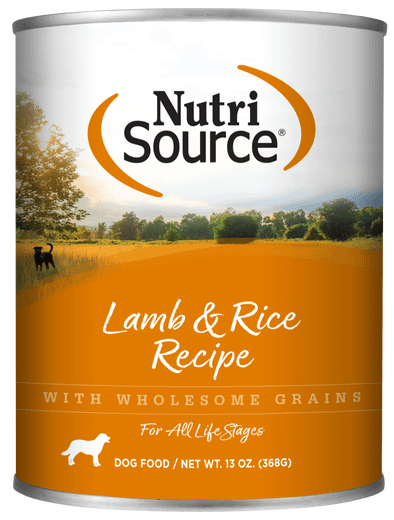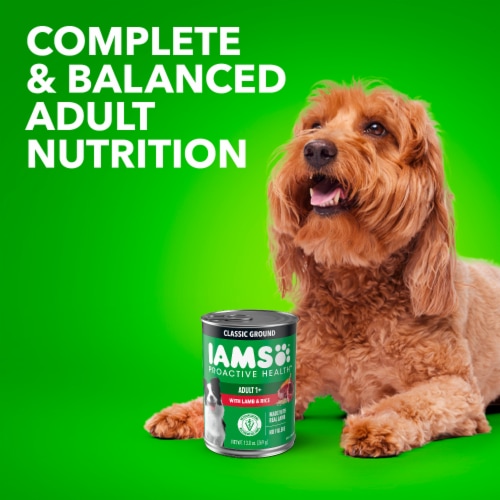
The Ultimate Guide to Wet Dog Food with Real Lamb and Rice
Introduction
Choosing the right food for your furry companion is one of the most important decisions you’ll make as a pet owner. With countless options available, it’s easy to feel overwhelmed. Wet dog food, especially varieties featuring real lamb and rice, has gained popularity for its potential health benefits and palatability. This article will delve into the advantages of this type of dog food, its nutritional value, how to select the best product, and more.
Why Choose Wet Dog Food?
Wet dog food, also known as canned dog food, offers several advantages over dry kibble:
- Hydration: Wet food has a significantly higher moisture content (typically 70-85%) than dry food (around 10%). This can be especially beneficial for dogs who don’t drink enough water, dogs with kidney issues, or those prone to urinary tract infections.
- Palatability: The aroma and texture of wet food are often more appealing to dogs, making it a good option for picky eaters or those with decreased appetites due to illness or age.
- Digestibility: Wet food is generally easier to digest than dry food, as it’s softer and requires less processing by the digestive system. This can be helpful for dogs with sensitive stomachs or digestive problems.
- Satiety: The higher moisture and protein content of wet food can help dogs feel fuller for longer, which may aid in weight management.
The Power of Lamb and Rice
The combination of lamb and rice in wet dog food offers specific benefits:
- Lamb: A Novel Protein Source
- Lamb is an excellent source of high-quality protein, essential for muscle development, tissue repair, and overall health.
- It’s often considered a "novel protein," meaning that many dogs haven’t been exposed to it before. This makes it a good choice for dogs with food sensitivities or allergies to more common proteins like chicken or beef.
- Lamb is also rich in essential amino acids, vitamins (such as B vitamins), and minerals (like iron and zinc).
- Rice: A Gentle Carbohydrate
- Rice is a easily digestible carbohydrate source that provides energy for your dog’s daily activities.
- It’s generally well-tolerated by dogs with sensitive stomachs and can help soothe digestive upset.
- Brown rice offers more fiber and nutrients than white rice, but both can be beneficial depending on your dog’s individual needs.
Nutritional Benefits of Wet Lamb and Rice Dog Food
When formulated correctly, wet lamb and rice dog food can provide a well-rounded diet for your canine companion:
- High-Quality Protein: Supports muscle mass, tissue repair, and a healthy immune system.
- Essential Fatty Acids: Promotes healthy skin and coat, brain function, and joint health. Look for foods that contain omega-3 and omega-6 fatty acids from sources like fish oil or flaxseed.
- Vitamins and Minerals: Supports overall health and well-being, including bone strength, immune function, and energy production.
- Fiber: Aids in digestion, promotes gut health, and can help regulate blood sugar levels.
- Moisture: Helps maintain hydration, supports kidney function, and prevents urinary tract problems.
Choosing the Right Wet Lamb and Rice Dog Food
With so many options available, it’s important to choose a wet lamb and rice dog food that meets your dog’s specific needs:
- Read the Ingredient List Carefully:
- Lamb should be listed as the first ingredient, indicating that it’s the primary protein source.
- Look for whole grains like brown rice rather than refined grains like white rice.
- Avoid foods that contain artificial colors, flavors, or preservatives.
- Be wary of excessive fillers like corn, wheat, or soy, as these offer little nutritional value.
- Check the Guaranteed Analysis:
- This provides information on the protein, fat, fiber, and moisture content of the food.
- Choose a food that meets your dog’s specific needs based on their age, activity level, and health status.
- Consider Your Dog’s Age and Life Stage:
- Puppies need a food that’s formulated for growth, with higher levels of protein and calories.
- Adult dogs need a food that helps maintain their weight and overall health.
- Senior dogs may need a food that’s lower in calories and higher in fiber to support digestion and joint health.
- Look for AAFCO Statement:
- The food should have a statement from the Association of American Feed Control Officials (AAFCO) indicating that it meets the nutritional requirements for your dog’s life stage.
- Consult Your Veterinarian:
- Your veterinarian can provide personalized recommendations based on your dog’s individual needs and health conditions.
How to Introduce Wet Food to Your Dog’s Diet
If you’re switching your dog from dry food to wet food, it’s important to do so gradually to avoid digestive upset:
- Start Slowly: Begin by mixing a small amount of wet food with your dog’s regular dry food.
- Increase the Ratio: Gradually increase the amount of wet food and decrease the amount of dry food over a period of 7-10 days.
- Monitor Your Dog’s Stool: Watch for any signs of digestive upset, such as diarrhea or vomiting. If you notice any problems, reduce the amount of wet food and consult your veterinarian.
- Adjust as Needed: Once your dog is fully transitioned to wet food, you may need to adjust the amount you feed them based on their weight, activity level, and metabolism.
Potential Concerns and Considerations
While wet lamb and rice dog food offers many benefits, there are a few potential concerns to keep in mind:
- Cost: Wet food is generally more expensive than dry food on a per-calorie basis.
- Storage: Once opened, wet food must be refrigerated and used within a few days to prevent spoilage.
- Dental Health: Wet food may not provide the same dental benefits as dry food, which can help scrape away plaque and tartar. Consider providing dental chews or brushing your dog’s teeth regularly.
- Allergies: While lamb is often considered a novel protein, some dogs may still be allergic to it. If you suspect your dog has a food allergy, consult your veterinarian.
Tips for Feeding Wet Dog Food
- Serve at Room Temperature: This can enhance the aroma and palatability of the food.
- Don’t Leave Food Out Too Long: To prevent spoilage, remove any uneaten wet food after 30 minutes.
- Wash Food Bowls Regularly: This helps prevent the growth of bacteria.
- Use a Food Scale: This ensures you’re feeding your dog the correct amount of food.
- Consider a Puzzle Feeder: This can slow down eating and provide mental stimulation.
Conclusion
Wet dog food with real lamb and rice can be a nutritious and delicious option for your canine companion. Its high moisture content, novel protein source, and easily digestible carbohydrates offer a range of health benefits. By carefully selecting a high-quality product and introducing it gradually to your dog’s diet, you can help them thrive. As always, consult your veterinarian for personalized recommendations based on your dog’s individual needs.
I hope this article is helpful! Let me know if you’d like any revisions or further information.

